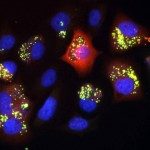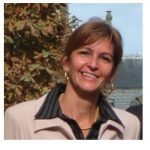Link to Pubmed [PMID] – 21768507
Antimicrob. Agents Chemother. 2011 Oct;55(10):4524-9
The main mechanism of fluoroquinolone (FQ) resistance in Mycobacterium tuberculosis is mutation in DNA gyrase (GyrA(2)GyrB(2)), especially in gyrA. However, the discovery of unknown mutations in gyrB whose implication in FQ resistance is unclear has become more frequent. We investigated the impact on FQ susceptibility of eight gyrB mutations in M. tuberculosis clinical strains, three of which were previously identified in an FQ-resistant strain. We measured FQ MICs and also DNA gyrase inhibition by FQs in order to clarify the role of these mutations in FQ resistance. Wild-type GyrA, wild-type GyrB, and mutant GyrB subunits produced from engineered gyrB alleles by mutagenesis were overexpressed in Escherichia coli, purified to homogeneity, and used to reconstitute highly active gyrase complexes. MICs and DNA gyrase inhibition were determined for moxifloxacin, gatifloxacin, ofloxacin, levofloxacin, and enoxacin. We demonstrated that the eight substitutions in GyrB (D473N, P478A, R485H, S486F, A506G, A547V, G551R, and G559A), recently identified in FQ-resistant clinical strains or encountered in M. tuberculosis strains isolated in France, are not implicated in FQ resistance. These results underline that, as opposed to phenotypic FQ susceptibility testing, the DNA gyrase inhibition assay is the only way to prove the role of a DNA gyrase mutation in FQ resistance. Therefore, the use of FQ in the treatment of tuberculosis (TB) patients should not be ruled out only on the basis of the presence of mutations in gyrB.


